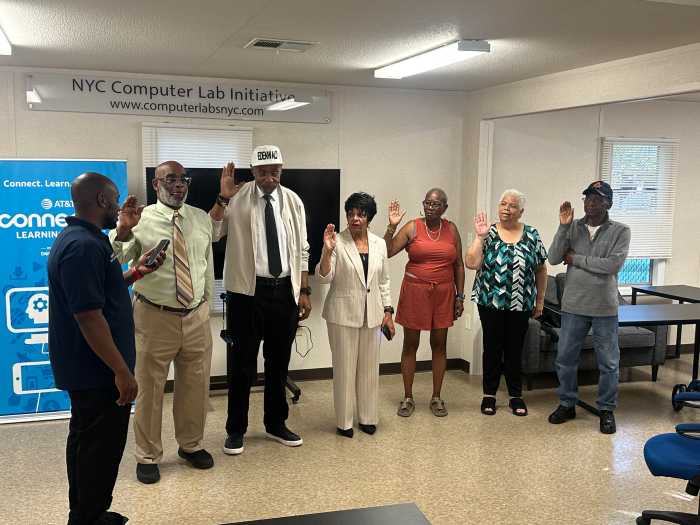Resilience, the ability to stick your head above the muck and keep on trucking, is an often-underestimated strength of the young people who trade sex for money or shelter. It keeps them from defeat and being victims, and it is a quality that allows for the marked bonds of friendship they forge. They strive for self-determination against heavy odds.
Make no mistake about it: the LGBTQ young offering their bodies on the streets of New York and on the web would rather do something else. They, for the most part, do not enjoy sex with clients, but prefer it to starving and or sleeping in shelters. In the diverse world of sex work, they practice survival sex.
According to a just-completed study, roughly half of the New York City queer youth engaged in sex work reported living in a shelter, another 10 percent said they lived on the street, and only 18 percent had been at the same address for a year. They need assistance, but few of the 283 interviewed wished to be confined and or “rescued.”
“It is difficult to grasp the complete lack of other viable options that makes sex work one of the few options available to youth of color,” explained Mitchyll Mora, a staff member at Streetwise and Safe, a group that works with homeless youth, who did research for the study. “They face an array of problems and the transgender and gender non-conforming youth have other barriers.”
The Justice Department-funded study, “Surviving the Streets of New York,” produced by the Urban Institute with the assistance of staff from Streetwise and Safe, a group that works with homeless youth, is one of the few that asks these young people to describe their lives and tell their stories.
One of the most important findings Streetwise and Safe’s Mora stressed is “distinguishing between exploitive and peer support relations.” Friends teach safe sex, advise about the police, serve as lookouts, or keep an email address when a friend is on a date.
Exploitation was the exception, not the rule. While this finding is not new, it sharply differs from news reports and popular fears that the young are in the clutches of violent and controlling adults who pimp them to clients.
Only eight percent, most often cisgender women, were tied to exploiters who used coercion and deception. In other words, 92 percent of participants said they were not trafficked, a finding echoed by other research cited in the study. The recent anti-trafficking legislation approved in Albany, however, is predicated on exploitation being the key driver of youth sex work.
To be sure, some youth described exploitive situations. A Latina lesbian said there were 30 to 50 women involved in a business where she had worked but has since left. In fact, of the eight percent who reported having been tied to exploitive situations, half had left that situation and were now independent.
Violence is a constant reality, but is more apt to come from arrests than from exploiters. Seventy percent of those interviewed had been arrested, but only nine percent were collared for prostitution. In general, respondents felt profiled by the police. The study concluded this surveillance — and the consequent arrests for minor infractions — increases “instability” in the youths’ lives and perpetuates their need to engage in survival sex.
“In custody, many youth experience violence on the basis of their perceived sexual orientation and gender identity,” the report stated.
Even in shelters, LGBTQ youth experience violence — both from staff and other homeless youth. A crackdown on trafficking will not address these vulnerabilities.
While virtually everyone said they would leave prostitution if they had a good paying job and shelter, many viewed this outcome as unlikely. Even those who had left sex work considered it possible they would return if the going got rough.
“More than 8 in 10 youth (82 percent) said there were positive things about engaging in survival sex — with most of these 225 respondents citing income (68 percent) or the fact that trading sex helped fulfill their basic needs for food and shelter (25 percent),” the report stated. “Eleven percent of respondents reported that exchanging sex for money and/or material goods helped foster a sense of community, and 12 percent reported that they enjoyed the sex act itself.”
The most common way youth entered the scene was by asking friends who were already in the game. Most of the youth were in LGBTQ social networks and knew someone who was doing sex work. Some, predominantly women, came to sex work essentially on their own, based on their circumstances. Others came to realize the opportunities from being on the street and getting picked up by an adult looking for sex.
Significantly, exploiters also used social networks to recruit, often employing other youth to do their bidding at wild parties and shelters. Some, then, were enticed by deception, but this is fairly uncommon.
“It boils down, if you have no food in your stomach, if you have no transportation, but you have a man in your face willing to give you money for a half hour,” a 19-year-old gay Latino male told the researchers. “You put your pride to the side, you throw everything out the window, and you forget who you are and learn to be someone else. You have to teach yourself these things.”
This attitude suggests that most youth sex is a chore rather than an assault. This young man is being rented for half an hour, not becoming a different person.
Sex work doesn’t necessarily define these youngsters any more than selling hamburgers defines a fast food worker. Sex work is part of their experience. Their lives are not static; learning sex work is part of a process of gaining control over their circumstances while they wait for a chance to have a better job, a home, and a partner. And a person who at one point is confined to a brothel can later escape and start working the streets on their own or doing so on the Internet through their cell phone. The way these youngsters organize their lives changes over time.
Many modify the way they find clients. They can learn how to negotiate. They stroll on the streets, the most common way to meet a client. And they used the Internet.
The study estimates that 2,000 to 4,000 LGBTQ youngsters practice survival sex — well less than one percent of the roughly 1.2 million New Yorkers 15-24, though of course a far higher portion of the queer youth population. Still, the numbers suggest that low-impact programs like drop-in centers, peer workers, and shelters for LGBTQ youth can have a significant impact.
At the end of the day, the most disruptive risk these youth face is incarceration. Stays at Rikers Island bring sexual harassment and even rapes.
“All New Yorkers should know their rights,” said out gay City Councilmember Corey Johnson, a Chelsea Democrat. “But is of the upmost importance for those who have been historically targeted while navigating our streets. [Streetwise and Safe] not only spreads this knowledge but advocates tirelessly for these targeted populations.”
Johnson and other members of the Council’s LGBT Caucus are asking Speaker Melissa Mark-Viverito to finding funding for the group, which manages its productive efforts on a very small budget.


































